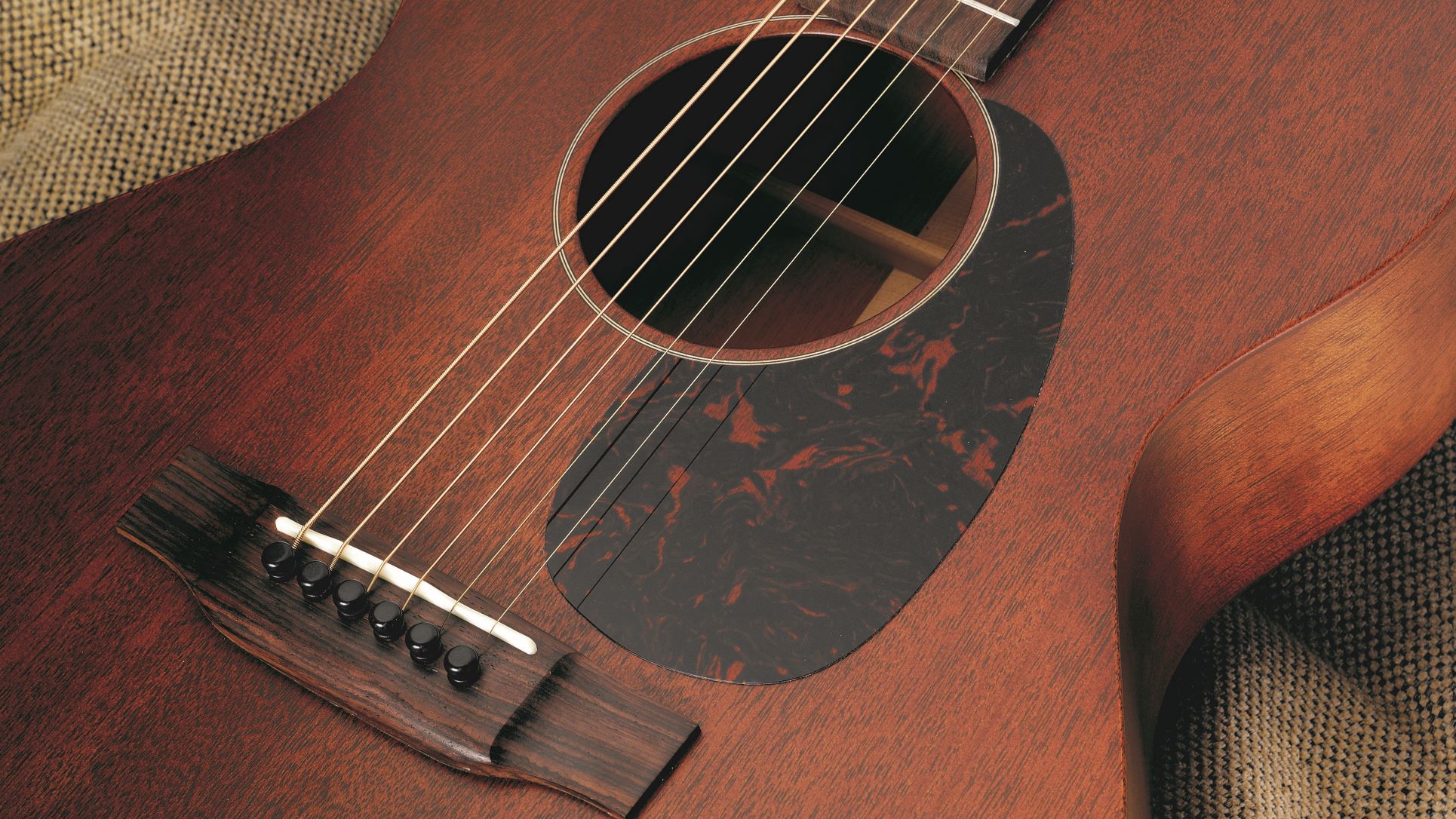Six Great Ways to Expand Your Acoustic Guitar Tone
These tried and trusted methods of string attack are guaranteed to broaden your tonal horizons.

The old adage that a guitarist’s sound lies mostly in his or her hands is especially true when it comes to the acoustic instrument. Of all the factors involved, attack is the most important. Here are a few ideas to consider as you hone your ultimate acoustic guitar tone.
1. Flesh It Out
Flesh is literally the warmest-sounding tone generator at your fingertips, and a good old-fashioned thumb strum is the balmiest way to go. A simple raking motion works well, and the further away from the bridge you go, the toastier the tone becomes. Use it for dynamic effect on sensitive passages, for the cozy-sounding Wes Montgomery-style octave approach or to take the bite off a bright-sounding instrument.
If you’re a devoted plectrum player, practice curling it up securely inside one of your fingers to free your thumb for strumming. If you’re a long-clawed cat, work the outside of your thumb for a similarly inviting sound.
2. Free Your Hand and Your Fingers Will Follow
To advance as a fingerstylist, commit to dropping the pick – at least for a while. It’s all about time on task. Many years ago, I dropped and lost the only plectrum I had while I was onstage. Forced to play fingerstyle, I whipped out some of the hip freehand techniques I’d been working on at home. The audience appreciated it, and it inspired me to make further explorations into playing freehand fingerstyle.
3. Fake It to Make It
The more I practiced, the less nails I’d have left by the time of an actual performance. During an interview, Kaki King advised me that it was time to take the plunge, go to a nail salon and get fake nails. I heeded her advice and got acrylics, which are super hardy, and I’ve never looked back.
The reward of having essentially five picks at one’s fingertips is truly awesome! The price of such flexibility is a brighter tone that becomes brittle if the nails get too long, so maintaining those suckers is a real consideration and a serious commitment.
4. The Spectrum of Plectrums
Picks come in a variety of styles, sizes and materials, and each has its own tone. A small plectrum is great for hybrid picking, where manageability is key. A medium-sized pick of thin to medium thickness can be ideal for strumming passages, and a thick one will deliver a strong fundamental note.
Picks come in a variety of styles, sizes and materials, and each has its own tone.
If you want tons of torque, try a thumb pick. Rush’s Alex Lifeson summed it up well when he said, “It all depends on the application. I generally use a medium pick, but I’ll use a light pick if I want to hear more of the percussive attack than the actual note, and a heavier pick to hear more of the note. I’ll often combine them when using acoustics in the studio.”
5. Slap Attack
The acoustic guitar’s percussive nature makes it ideal for slapping. While developing a fully integrated slapping-and-tapping style à la Andy McKee is a lifetime pursuit, simply adding some slap to your arsenal is relatively straightforward. McKee gets his primary “snare” sound by whacking the side of his thumb between the bottom two strings, creating a backbeat.
Make sure the thumb is parallel, and use the knuckle as a focal point. Now try it with your thumb turned perpendicular at the 12th fret, and then at other frets, using the fingerboard as a base. Harmonics abound an octave above the fretted note. I find the middle digit easiest to use for finger slaps, but anyone will do once you get the hang of it.
Every once in a while, use your whole hand to give that acoustic a good spank!
6. Sympathetically Speaking
This harmonically inspiring attack involves an “unhinged” technique that allows notes to blossom and creates sympathetic overtones on open strings. And it sounds just glorious! The key is to remove your palm from its natural resting position down by the bridge. Placing your middle fingers below the soundhole as an anchor point, pluck downward with the thumbnail or a pick. Now, when you pick a note on a given string, it will resonate to the max while the other strings ring out. Harmonics will soar to the heavens!
Try this technique with a new set of strings in an open tuning for mesmerizing hammered dulcimer-like tones. Modal tunings (i.e., those with no 3rd) are particularly awesome, as you’re harmonically free to improvise over the drone wherever your muse takes you.
Get The Pick Newsletter
All the latest guitar news, interviews, lessons, reviews, deals and more, direct to your inbox!
Jimmy Leslie has been Frets editor since 2016. See many Guitar Player- and Frets-related videos on his YouTube channel, and learn about his acoustic/electric rock group at spirithustler.com.
“Write for five minutes a day. I mean, who can’t manage that?” Mike Stern's top five guitar tips include one simple fix to help you develop your personal guitar style
"It’s like you’re making a statement. And you never know where it’ll lead." Pete Thorn shares the tip that convinced Joe Satriani he was the right guitarist for the SatchVai Band










